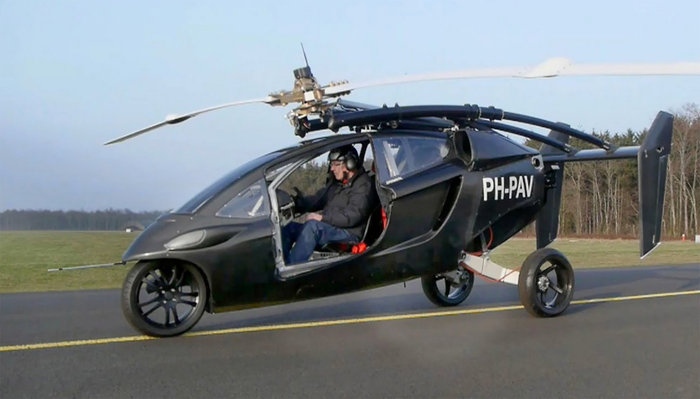Just as we begin to get used to the idea that cars can drive themselves, we have to start thinking about learning to fly our cars. And Utah will be the first place in North America that we can do that learning.
Just as we begin to get used to the idea that cars can drive themselves, we have to start thinking about learning to fly our cars. And Utah will be the first place in North America that we can do that learning.
In anticipation of the delivery of its first flying car in 2018, Dutch company PAL-V has opened the first-ever flying car school in Roosevelt. On Oct. 10, the company welcomed potential customers, the press and the curious to a day-long event to introduce its vehicle and the school where operation instruction will be given.
Citing Utah’s practical location for the school and the availability of qualified gyroplane instructors in the area, PAL-V officials gave event attendees the opportunity to sit in the vehicles and watch demonstrations of the forerunner of the first production model, the Liberty.
“We are very excited to make this announcement today and even more enthused that we are going to be working with gyroplane training guru Phil Harwood and the IAPGT (International Association of Professional Gyroplane Training) to do whatever we can to help create standardized flight training programs around the world to ensure our clients are both safe and proficient at flying their PAL-V,” said Robert Dingemanse, CEO of PAL-V.
“The most important thing for PAL-V is to ensure the safety of its clients. [This] is at the forefront of every decision we make,” said Mark Jennings-Bates, vice president of sales for PAL-V in North America. “The fact that clients get to learn to fly their flying car in a mountain setting is simply added value and will also serve to demonstrate how stable the PAL-V flying car platform is in mountain winds.”
While pre-sales of the PAL-V Liberty continue in North America, the company expects that phase to be complete towards the end of the year. As a result, it became necessary to commence flight training for its clients and establish a network of regional training opportunities in strategic locations in North America, the first of which is in Roosevelt, Jennings-Bates said.
The PAL-V flying car uses gyroplane technology for stable and safe flight and, as such, clients will be learning to fly on modern gyroplane equipment which is very popular with clients, very safe to fly and is becoming more accepted by regulators in North America as a safe and popular alternative to fixed-wing aviation, according to a PAL-V release.
Clients and media at the event were able to fly in several different models of gyroplanes and talk to pilots, flying instructors and owners in anticipation of a delivery of the first PAL-V flying car in 2018.
The car, with its three-wheel layout and rotor blades that fold away on top of the car, takes the form of a gyrocopter aircraft upon takeoff. An unpowered large rotor on top provides lift, while an engine-powered blade on the rear of the vehicle gives thrust.
The cars from the first production run of the vehicle are for sale now, with agencies such as police forces having shown interest in the concept, as well. Half of the production run of the PAL-V Liberty are destined for Europe, with an initial cost just over $500,000, according to the company.
“We have recently started talking to buyers, have the first contracts in place and a lot of interest,” said Markus Hess, head of marketing and sales at PAL-V.
The relatively close delivery date for the Liberty model has come as a mild surprise to industry watchers because of a lack of publicity in the marketplace. “We have been working in silence for more than four years,” Dingemanse. “Before making any new announcements, we wanted to make sure that all the checks are in the boxes.”








